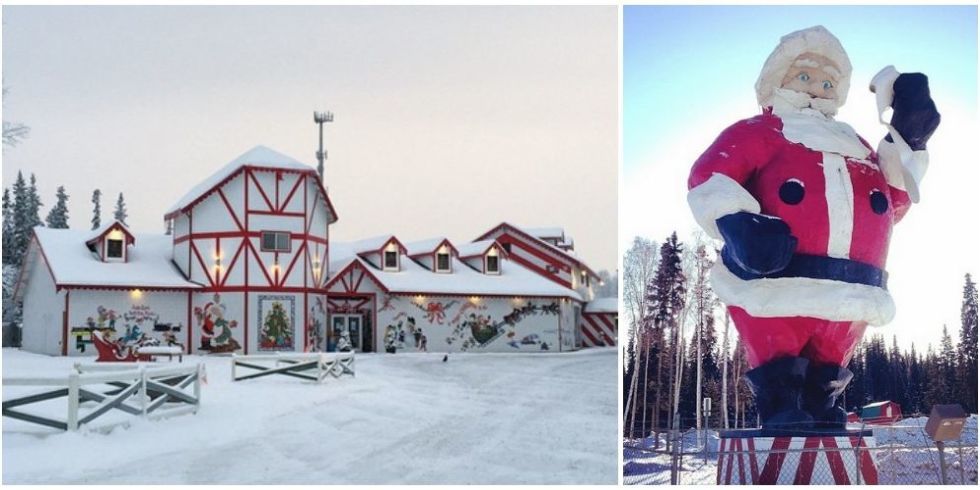Table Of Content
This article lists the oldest extant buildings in California, including extant buildings and structures constructed during Spanish, Mexican, and early American rule over California. Only buildings built prior to 1850 are suitable for inclusion on this list, or the building must be the oldest of its type. The Los Angeles Pressed Brick Company dominated the face brick market in southern California and, in 1916, established a large refractory products plant at Alberhill in Riverside County.
Where are most new homes being built?
The moisture barrier acts as a sealant to keep outside water and moisture away from the stucco, but installing a proper moisture barrier is in itself difficult and requires experienced professionals. The main problem with stucco is that it is prone to cracking or developing holes due to water seeping in from the outside. Stucco needs to have a proper moisture barrier installed before applying the stucco, since water is the enemy of stucco. Building a house is an incredibly complex process that requires careful planning, organization, and skill. Depending on the individual house, materials, location and builder, the steps to building a house can vary. Finally, brick does not provide much insulation, making it less suitable for the hot and dry climate of California.
History

Four of their five children were born in the second floor facing Main Street on the south side. In 1905, along with many other residents of the area, the Gibbs moved to a more fashionable neighborhood in Los Angeles. When the Sepulveda Block was built in 1887 Señora Eloisa Sepulveda kept a suite of three rooms for her own use.
The Art of the Brick, Boiler Room review: self-serious but fun exhibition of Lego art - Time Out London
The Art of the Brick, Boiler Room review: self-serious but fun exhibition of Lego art.
Posted: Thu, 18 Apr 2024 07:00:00 GMT [source]
How a house is built step-by-step?
The population had grown from less than 2,000, most of whom were Mexican, to over 50,000, only 19% of whom were Mexican. When the building was constructed it appears that Señora Sepulveda herself occupied the three residential rooms located in the rear, facing Olvera Street, then an unpaved alley. Commercial tenants were located in the stores fronting on Main Street while the second floor was used as a boarding house. Factors such as large populations, strong job markets, and a thriving businesses climate have led to an increase in demand for new buildings, which has caused an upsurge in construction projects. In addition, the increased availability of funding from public and private sources has allowed for more extensive and expensive projects.
As rising real estate values deemed valuable clay deposits insignificant, the brick companies were forced to close or locate their operations further away from the cities that depended on their product. This economic squeeze in the brick industry took its toll by the loss of a large number brick manufacturers in the first two decades of the 1900s. In 1870, the Patent Brick Company began manufacturing pressed, Roman, and fancy bricks near San Rafael, Marin County.
Can These Guys Revive A Pair Of Salvage Bikes In 48 Hours And Ride Away?
In 2019, San Francisco and Los Angeles experienced rent increases of over 5%. As a result, these cities have far fewer affordable units available to rent, with just 19% and 21% of units, respectively, deemed to be “affordable” to a family earning the median income. Furthermore, California’s population is comprised of low-income residents, with a large portion of traditionally underserved populations. This means that public funding for housing developments is often allocated to low-cost housing rather than market rate housing. City planners are creating multifamily complexes and mixed-use buildings to create more affordable housing and reduce sprawl.
Earthquakes required changes in structural products and building codes that eliminated some companies. Increased use of reinforced concrete also had displaced bricks in the building market. California did not have great paving brick manufacturers like other states mainly because of the scarcity of good vitrified clay deposits. High-quality pavers were shipped from producers outside of California, such as the Denny-Renton Company in Washington. The first paving brick in California was probably that made by the Los Angeles Pressed Brick Company in Santa Monica in 1906.
The Brick welcomes new owner, fresh roasts News - Appeal-Democrat
The Brick welcomes new owner, fresh roasts News.
Posted: Sat, 21 Oct 2023 00:42:45 GMT [source]
The construction boom in California has also been bolstered by a number of government initiatives, such as incentives and tax credits, that have been designed to attract new businesses. These initiatives have improved the state’s business climate and encouraged companies to invest in new construction projects. The National Low Income Housing Coalition estimates that the US is experiencing a shortage of seven million housing units for low-income renters.
Plaza Methodist Church
The new town was named El Pueblo de Nuestra Señora Reina de los Ángeles. Priests from San Gabriel established an asistencia (a sub-mission), the Nuestra Señora Reina de los Angeles Asistencia, to tend to their religious needs. The significant growth in these sectors is likely due to the high demand for residential housing in California’s largest cities, prompting more companies to build offices and warehouses. The most building permits were issued in the state for residential construction, with about 81% of all permits issued for this purpose in 2020. California also saw the largest increases in commercial and industrial building permits, with both types increasing by 25.2% and 18. The majority of new homes being built in the United States are located in suburban and exurban areas.
From 1920 to 1980, due to stiff competition, many of the smaller brick companies merged with the larger companies. From Los Angeles came the Pacific Clay Products, Inc., which acquired the Pacific Sewer Pipe Company in Los Angeles and N. During this period also we saw the closing of Remillard, San Jose, Dickey, Simons, and many other large brick plants when the use of building bricks declined in the market place.
Texas came in second with $51.8 billion and Florida followed with $32.7 billion. The amount of new construction has increased significantly in certain states due to the effects of covid-19. Since the early 2000s, there has been rapid buying and selling of properties for investment purposes, leading to an artificially inflated housing market and rising prices. The construction of new homes in these areas can provide employment opportunities and economic boons to these regions. Exurban areas are usually even more remote, offering larger homes and lots on acreages or with more natural landscapes. Suburban and exurban homes are typically designed to accommodate larger families, often with multiple levels and amenities such as pools and outdoor spaces.
Up to 1854, bricks were made and fired right on or near the property of the building project, provided there was enough suitable clay. Many building contractors doubled as brickmakers or hired brickmakers to supply bricks on site. This was true for many of the early brick buildings in the Mother Lode towns along Highway 49, though some bricks were shipped by wagons from Stockton and Sacramento. Just within the city limits, there were 30 brickyards containing 40 brick machines and capable of producing more than 250,000 bricks per day. Harnett, Samuel Carlisle, P.B. Cornwall, F. Burke, Polk and Todd, Pettit and Queen, Fountain Brothers, and Callahan and Ryan.
Built in 1926, the Plaza Methodist Church was built on the site of the adobe once owned by Agustín Olvera, the man for whom Olvera Street was named. It is at the southeast corner of Olvera Street and Paseo de la Plaza (i.e. the Plaza). During World War II the Sepulveda Block became a canteen for servicemen and three Olvera Street merchants were located in the building. The building continued to be used by Olvera Street merchants until 1981 when they were relocated for the building’s restoration. Today, El Pueblo Park’s Visitor’s Center is located in the south store on the ground floor. Restoration plans call for the creation of an 1890s grocery store on the north side of the first floor.









